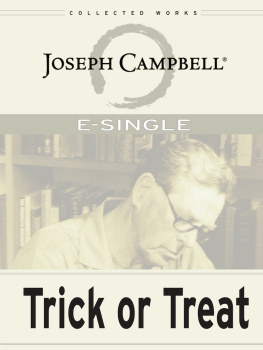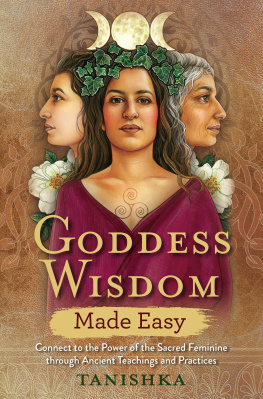
This book is dedicated to my grandchildren,Una, Otis, and Emilia,and to my celestial friends
Acknowledgments
My deep thanks goes to my life companion of 54 years, Gianni, who sustained me through the decades of my research with great love and generosity, and to my children Bettina, Nicola, and Andrea, who supported and accepted me, although I was not always an easy mother. I am grateful to Christine Downing, to whom I owe the courage to write my book in English, which is not my mother tongue, as well as her endorsement to bring the book to publication. My gratitude goes to Cielle Tewksbury for her untiring patience, indulgence, and love to correct my imperfect English. My thanks to Mirella Giuliano, who always brought me back to solid ground when I floated in the clouds of illusion; she gave my tentative steps in writing some structure. My thankfulness also goes to all my travel companions who always believed in the work we were doing. I would like to thank Chungliang Al Huang for teaching me how much joy of life is in the Taiji dance. I have Antonio Tironi to thank for the most profound conversations that always ended with mirth and laughter. A heartfelt thank you to Juan Nuez del Prado, who foretold that my book would be publishedhe was the most mysterious encounter in my life and helped me to experience the powerful and lively presence of Pachamama. I am grateful for the caring support and the sensitive editing of the staff at Inner Traditions, Bear & Company, of my work. And finally, Im grateful to Barbara Bruppacher for acting as a very competent liaison between the publisher and me.
Foreword
I am honored to have been invited by my dear friend Ruth Rusca to write this brief foreword to the marvelous book you are about to read.
Ruths study of the four women from the Hebrew Bible whom the gospel of Matthew lists as foremothers of Jesus is the culmination of an almost lifelong task, one that has cost her much in the way of pain, sacrifice, and solitude. In a sense it had its beginnings in Ruths childhood exposure to the rich symbolism of the Catholic liturgy that surrounded her as a Protestant child growing up in Italian-speaking southern Switzerland, an exposure that led her from early on to respond to religious symbols as symbols. Then in midlife, shortly after undergoing a hysterectomy, she experienced an imperative calling to shift her energy to spiritual creativity and suddenly and mysteriously found herself drawn to the myth of Marys immaculate conception. As you will see, her understanding of what this really meant has continued to deepen during the almost twenty-five years that have since passed.
Quite early Ruth had an intuition that to understand Mary she needed to understand her relation to her foremothers, to understand her as a daughter, and not just as mother. She surmised that the inclusion of Tamar, Rahab, Ruth, and Bathsheba in Matthews genealogy implies a (perhaps unconscious) recognition that an exclusively male lineage for the savior will not serve. Of course in the gospel all four women are named as mothersTamar of Pharez, Rahab of Boaz, Ruth of Obed, Bathsheba of Solomonand in Matthew the lineage ends with Joseph (not Mary!).
But Ruths interpretation is transgressive; it goes beyond the text. For her it is not as mothers that these women enter the story but as powerful, initiative-taking, sexual women. She is deeply aware that the reemergence of the Goddess energy, the feminine energy, rejected in patriarchal monotheism is necessarily a transgressive move, beautifully symbolized by the stories involving these four womeneach of whom came from outside the Hebrew world (Tamar and Rahab were Canaanites, Ruth a Moabite, and Bathsheba a Hittite).
As her book makes clear, this revisioning of Mary by way of her transgressive foremothers is intended to help all of us, men as well as women, move toward a more holistic consciousness. Ruth is deeply aware of the cost to all of us of our cultures domination by the differentiating consciousness often designated as masculine, though she is also appreciative of its historical and psychological necessity. Indeed, she is hoping to help us move beyond the polarizing of the masculine and feminine, of spirit and matter, of soul and sexuality, which encourages us to see them as opposites, as intrinsically incompatible.
By entering deeply into these stories, Ruth seeks to make visible their relevance to our own soul journeys and to the overcoming of these tensions in ourselves. She notes how the sexuality of each of the four women led to their becoming part of the biblical story. She emphasizes how all but Bathsheba took conscious initiative and assumed responsibility for her exercise of power. Bathsheba, in contrast, was passive in relation to King David: she allowed herself to be abducted by him and did not take responsibility for her seductive sexual beauty. (Still, I do want to add that later on Bathsheba took a lot of initiative in tricking David into naming her son, Solomon, as his heirthough, granted, even that is the use of feminine wile, not forthright exercise of power.) In any case Ruth sees Bathsheba not as a model for us, butprecisely in her weaknessserving as a call to us to complete a pattern she herself leaves unfinished.
Not too surprisingly perhaps, the most moving exploration is the one focused on the biblical Ruth, the authors own namesake, who has come to be an invisible friend, who lives uninhibitedly in order to make a relationship fruitful and to stay true to her innermost self. Ruth Rusca sees that Ruth essentially as a daughter, as remaining Naomis daughter even after literally bearing a child, since she immediately turns her son over to Naomi to raise. This becomes an even more central theme when she turns to Mary, since she sees the story of the Immaculate Conception as providing us with a Mary who is also not primarily a mother but a daughter.
For what is most important about Ruth Ruscas powerful innovative study is that it is adamantly not calling for a return to the Mother Goddess and the undifferentiated consciousness she represents. Just as in Christian mythology God the Father incarnates in a human son, so the archaic Mother Goddess needed to incarnate in a human daughter. So Mary is important not as a future mother of Jesus or as a virgin, but as a fully human, truly embodied, deeply feminine, individualized daughter of the Goddess.
Thus in the first version of this study the conception of Mary was seen as representing the goal of the feminine journey; Mary was the distillation of the four energy streams flowing from her transgressive foremothers. The goal of our soul journeys was the conception of this powerful Mary in us, in our souls.
But the study had not yet been completed after all. For, seven years after Ruth thought she was done, she found herself having to add a chapter on the Magdalene. She had come to see that the two Marys together actually more fully represent the archetype of female human wholeness than either could on her own. The tradition of seeing Mary of Nazareth only in her motherly and virginal aspects may be too well established. In Mary of Magdala the integration of the sexual and the spiritual, the active and the receptive, is more readily seen.
So in the end I, too, am grateful for the delayand even more grateful that now at last this wonderful book is ready for its readers.
CHRISTINE DOWNING
Christine Downing, Ph.D., is currently a professor of Mythological Studies at Pacifica Graduate Institute in Santa Barbara. She was the first woman president of the American Academy of Religion, the primary professional association for religious studies scholars. She taught for almost twenty years in the Department of Religious Studies at San Diego State University and, during the same period, was a member of the Core Faculty at the San Diego campus of the California School of Professional Psychology. From 1963 to 1974 she served as a faculty member of the Religion Department at Douglass College of Rutgers University. She has also taught at the Jung Institute in Zurich and lectures frequently to Jungian groups, both in the United States and abroad, and at American and European universities. She is the author of
Next page







